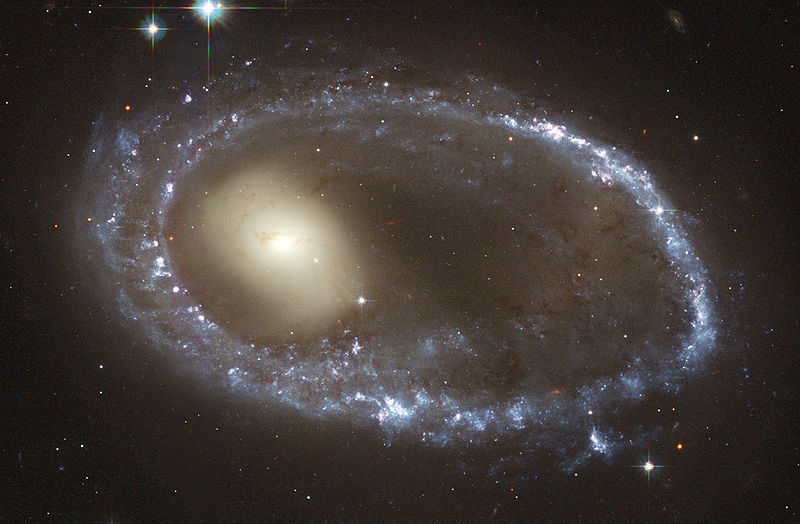[/caption]
There are spiral galaxies and elliptical galaxies, but one of the strangest you’re ever going to see is a ring galaxy. One of the most famous examples of these is Hoag’s Object, discovered in 1950 by Art Hoag – but there are other examples as well.
And a ring galaxy really does look like a ring. There’s a bright central core, and then a large gap without much luminous matter, and then a bright ring containing hot, blue stars.
Astronomers think that ring galaxies are formed when a smaller galaxy passes through the center of a larger galaxy. The space between stars in a galaxy is vast, so when galaxies collide, the stars don’t actually crash into each other. Instead, it’s their gravity that makes a mess. In this situation, it’s thought that the smaller galaxy slices right through the disk of the larger galaxy. The gravity of the smaller galaxy collapses vast clouds of gas and dust, and creates a burst of star formation around the edge of the larger galaxy.
The change in gravity drastically affects the orbit of the stars in the larger galaxy. They orbit outward and bunch up into the bright starforming ring. This blue ring is continuing to expand outward, and astronomers believe that it only lasts for a few hundred million years before it begins disintegrating. Eventually only the bright galaxy core will remain.
In 2004, astronomers released an image of the ring galaxy AM 0644-741 to celebrate 14 years of service by the Hubble Space Telescope.
We have written many articles about galaxies for Universe Today. Here’s an article about a ring galaxy imaged by Hubble.
If you’d like more info on galaxies, check out Hubblesite’s News Releases on Galaxies, and here’s NASA’s Science Page on Galaxies.
We have also recorded an episode of Astronomy Cast about galaxies – Episode 97: Galaxies.

